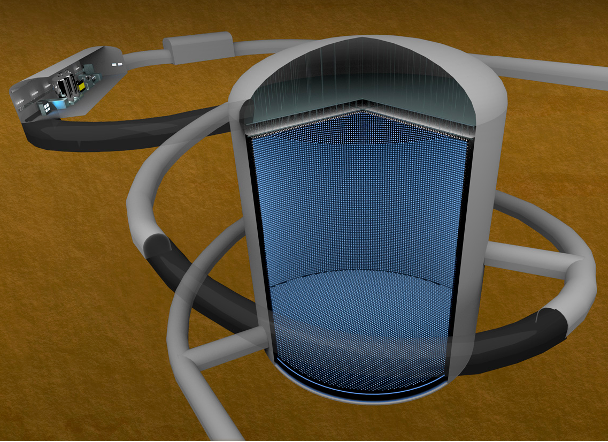
Hyper-Kamiokande (Hyper-K) will be the world’s largest underground water Cherenkov neutrino detector, aiming to start operations in 2027. It succeeds the very successful Super-Kamiokande (Super-K) and T2K experiments with an order of magnitude larger far-site detector volume, doubly sensitive photosensors, an upgraded higher intensity neutrino beam from the J-PARC accelerator, and new near detector technologies. Through these improvements, Hyper-K aims to definitively discover a new source of CP violation towards understanding the history of the universe. Sensitivities to astrophysical sources and beyond the Standard Model physics are also enhanced: supernovae, nucleon decays, solar neutrinos, and dark matter.
These measurements require unprecedented precision where any uncertainties in our understanding of the experiment can jeopardize our chance of discoveries. A novel moveable Intermediate Water Cherenkov Detector (IWCD) is proposed near J-PARC, together with upgrades to the existing T2K near detector ND280. These aim to precisely characterize neutrino interactions on water as a function of neutrino energy, to mitigate uncertainties in their modeling. To reduce uncertainties in the modeling of water Cherenkov detectors themselves, new calibration techniques, water quality monitoring, and machine learning algorithms are being developed in a campaign to disentangle the highly degenerate fundamental parameter space. An upcoming Water Cherenkov Test Experiment (WCTE) at CERN will allow the evaluation of these technologies in a well-controlled particle beam, feeding back to the Super-K and Hyper-K experiments.
(Last update: 2022/05/09)






